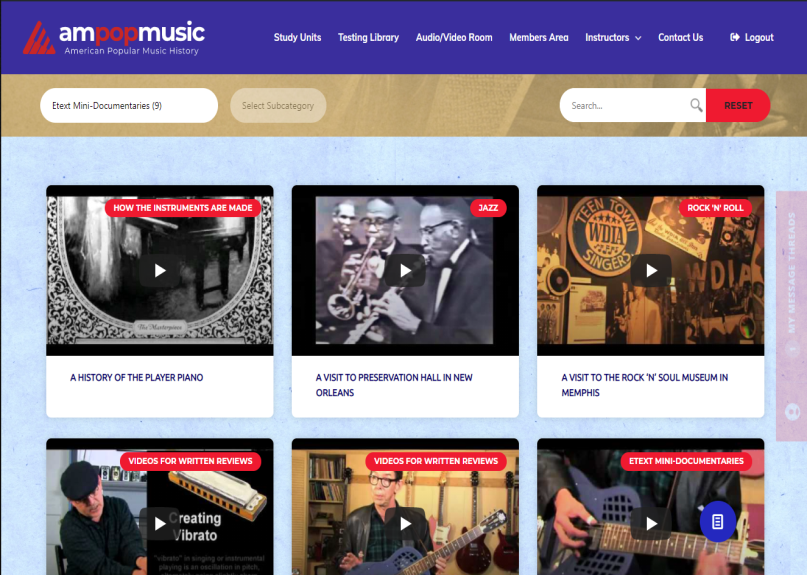AmPopMusic.com
American Popular Music History
- Etext resource for university and college general music history classes
- Can be used as an online, in-class, or hybrid resource
- 160+ chapters; 2,500+ audio and video examples
- Embedded self-graded tests and quizzes
- Available on all smart devices, phones, laptops, or desktops
Nine Study Units
With nine study units and over 160 chapters, covering the wide range of American popular music, AmPopMusic can help your students learn and experience new vistas of musical understanding.
Assessment Tools
Measuring the knowledge and skills gained by your students is easily done with dozens of self-grading practice tests and recorded quizzes.
Musical Examples
Reading without hearing doesn’t bring any benefit for studying music history, so we’ve included over 2,500 audio and video examples organized by genre, time period, or artist.
Gradebook Tools
Individual student progress and scores can be viewed online or exported in a spreadsheet format. Students can view and monitor their own progress on their Dashboard Gradebook.
Listening Log Worksheets
As a guided listening resource, the Audio & Video Log guides the learning listener to analyze a music example according to instrumentation, structure, musical layers, message meaning, unique features, tempo, and more.
Student Notepads
As your students read, they can create notes or even short essay summaries. Notepad is available throughout the entire site to create, review and edit notes. All notes created by students can be viewed by their teacher alone.



Chapter Study Qs
As guided materials for students, Study Qs are printable forms which provide questions following reading assignments that can be completed on the computer, printed and submitted or emailed once saved.
Teaching Resources
As a guided listening resource, the Audio & Video Log guides the learning listener to analyze a music example according to instrumentation, structure, musical layers, message meaning, unique features, tempo, and more.






